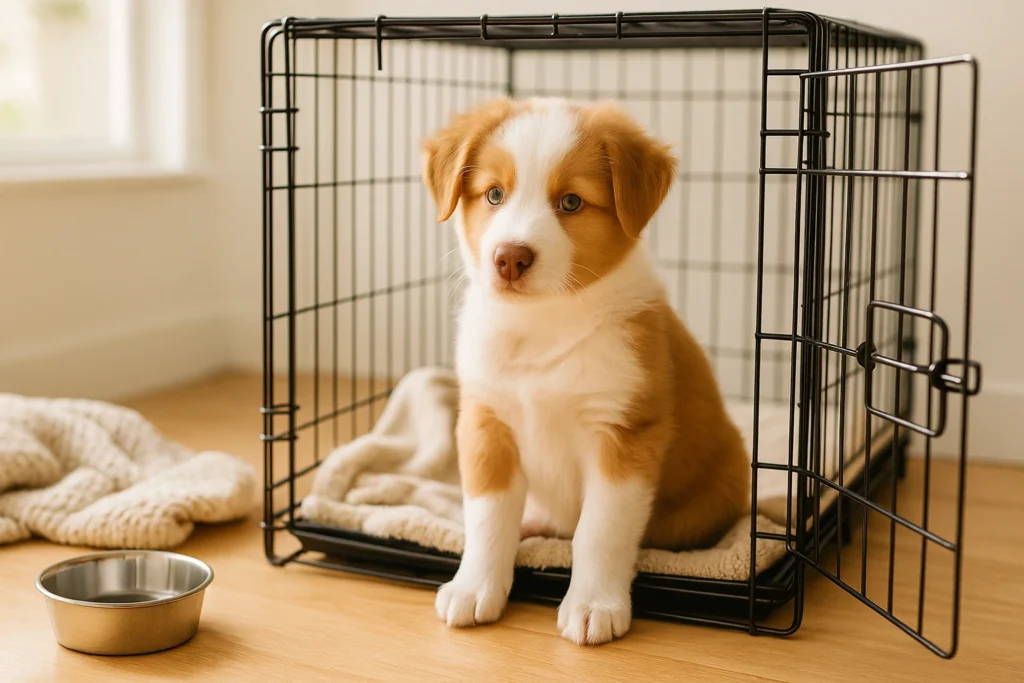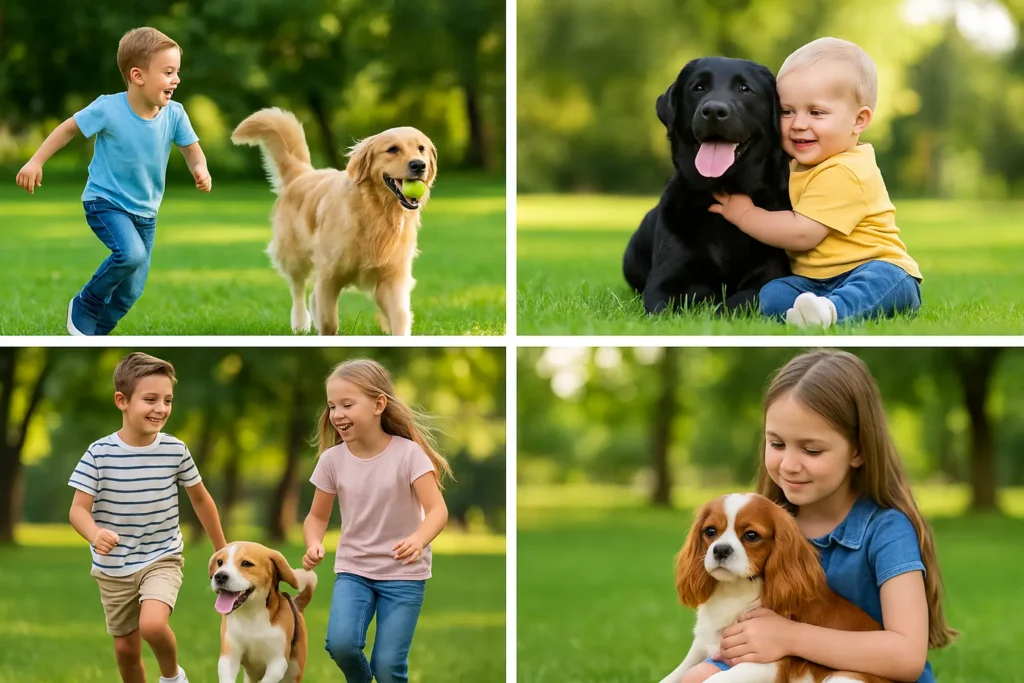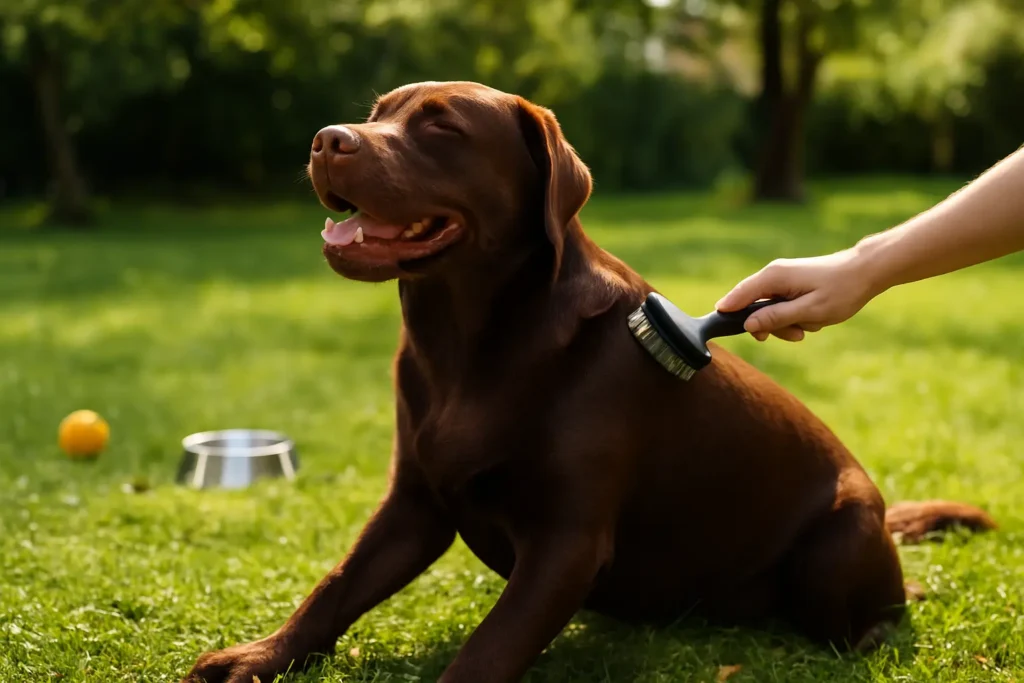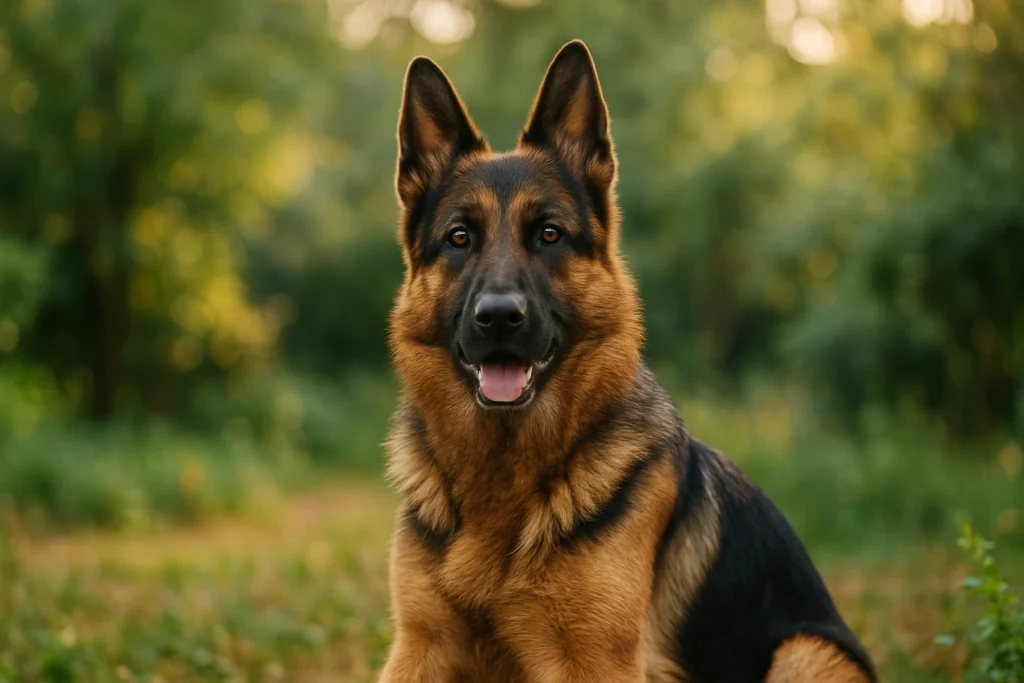If you just brought home a new puppy, one of your biggest questions is probably: “How fast can my puppy be potty trained with a crate?”. Most puppies can learn the basics of crate and potty training within 2–4 weeks if you are consistent with a routine, but full house training can take 4–6 months, depending on age, breed, and effort.
Using a crate to house train a puppy is one of the most effective methods recommended by vets and trainers. Puppies naturally avoid soiling where they sleep, so the crate helps build bladder control and teaches them to “hold it” until you take them outside. Pair this with a puppy potty training schedule and lots of positive reinforcement, and you’ll see results faster than almost any other method.
That said, there’s no “one-size-fits-all” answer. A German Shepherd puppy may learn quicker than a toy breed, and a rescue dog might need more patience than an 8-week-old pup. The key is understanding how long your puppy can realistically hold their bladder, keeping a consistent routine, and using the crate the right way, not as punishment but as a safe den.
In this guide, we’ll break down:
- How crate training speeds up puppy potty training
- A step-by-step crate and potty training schedule
- How old a puppy needs to be to start house training
- The easiest puppies to potty train vs. the most challenging
- Troubleshooting common problems like when a new puppy won’t pee in the crate
- Tips from professional dog trainers and proven potty training techniques for puppies
By the end, you’ll know exactly how to create a realistic potty training plan that works, whether you want to house train a small puppy quickly or stop accidents with an older rescue.
1. Why Crate Training Works for Puppy Potty Training
If you’re wondering why so many trainers recommend crate and potty training for puppies, the answer lies in a dog’s natural instincts.
1. Puppies Don’t Like to Soil Their Sleeping Area
Dogs are den animals by nature. In the wild, they sleep in small, cozy spaces and instinctively keep them clean. A puppy potty training crate mimics this instinct by creating a safe, comfortable den where your pup rests. Most puppies will avoid peeing or pooping in their crate as long as they have regular opportunities to go outside.
That’s why using a crate to house train a puppy is one of the fastest and most reliable potty training techniques.
2. Builds Bladder and Bowel Control
Young puppies can only “hold it” for about 1 hour per month of age (so a 2-month-old can last 2 hours, a 3-month-old about 3 hours, and so on). Without a schedule, accidents are inevitable. The crate helps extend this natural holding ability because the puppy learns to wait until they’re taken outside.
Pairing the crate with a puppy potty training schedule ensures that your pup learns bladder control step by step.
3. Prevents Bad Habits in the House
Without structure, puppies may wander around freely and leave accidents in hidden corners. Crate training prevents unsupervised roaming, which stops your pup from developing the habit of eliminating indoors. Instead, they quickly associate going potty with one location: outside.
This makes dog housebreaking training faster and prevents long-term problems.
4. Encourages Routine and Predictability
Dogs thrive on consistency. When you crate train and potty train a puppy, you’re building a daily rhythm: wake up, go outside, eat, play, potty, sleep. This predictability reduces stress for both you and your pup.
Even busy owners can use this structure by sticking to a puppy potty training schedule that fits their work hours and family routine.
5. Helps with Overnight Training
One of the hardest parts of house training a puppy is nighttime accidents. A properly sized crate encourages puppies to sleep through the night without elimination. While very young pups may still need one bathroom break around 2–3 a.m., most adjust quickly and sleep longer stretches.
This makes crate training especially useful for first-time owners who want to avoid endless late-night messes.
Key Takeaway: Crate training works because it uses your puppy’s natural instincts to keep their den clean, teaches bladder control, and builds a reliable schedule. Done correctly, it makes potty training faster, easier, and far less stressful than other methods.
Learn the benefits of early dog training for new owners.
2. Step-by-Step Puppy Potty Training Schedule with a Crate
One of the most common questions first-time owners ask is:
“What is the best puppy potty training schedule using a crate?”
The truth is, consistency is everything. A schedule gives your puppy structure, helps them learn bladder control, and prevents accidents. Below, you’ll find a practical daily routine for different puppy ages.
How Long Can a Puppy Hold It?
A useful rule of thumb is:
1 hour per month of age, plus 1.
- 2 months old = about 3 hours
- 3 months old = about 4 hours
- 4 months old = about 5 hours
This applies during the day. At night, most puppies can last slightly longer since they’re sleeping.
Daytime Puppy Potty Training Schedule with Crate
Here’s a sample schedule for a 2–3 month old puppy using a crate:
Morning (Wake-Up)
- Take your puppy straight outside before breakfast.
- Praise and reward when they potty.
- Feed breakfast, then return outside 10–15 minutes later.
Puppies often need to go right after eating.
Mid-Morning
- Playtime + supervised roaming.
- Short crate nap (1–2 hours).
- Right after crate time → potty outside immediately.
This is the foundation of crate and potty training a puppy — every crate session ends with outdoor potty.
Lunchtime
- Meal → potty within 10 minutes.
- Play + training session.
- Back to crate for a nap (1–2 hours).
Afternoon
- Wake up → potty outside.
- Leash walk or outdoor play (great for dog socialization training at the same time).
- Another crate nap.
Evening (Dinner)
- Meal → potty within 10 minutes.
- Play + short crate break.
Before Bed
- Final potty trip outdoors.
- Quiet crate sleep.
Nighttime Puppy Potty Training Schedule
Night can be tricky. Here’s what to expect:
- 8–12 week puppies: Likely need 1 potty break at night (around 2–3 a.m.).
- 12–16 weeks: May sleep 6+ hours before needing a break.
- 16+ weeks: Many can sleep through the night if crate properly.
Always take your pup out calmly and quietly at night. Don’t play just potty and back to crate. Make potty training easier with these essential dog training tools
Sample Hourly Crate Routine (2–3 months old)
- 7:00 a.m. – Wake, potty, breakfast, potty again.
- 8:00 a.m. – Play/training.
- 9:00 a.m. – Crate nap.
- 11:00 a.m. – Potty + outdoor play.
- 12:00 p.m. – Lunch + potty.
- 1:00 p.m. – Crate nap.
- 3:00 p.m. – Potty + short walk.
- 4:00 p.m. – Play/training.
- 5:00 p.m. – Crate nap.
- 6:00 p.m. – Dinner + potty.
- 7:00 p.m. – Family time/play.
- 9:00 p.m. – Potty + crate for sleep.
- 2:00 a.m. – Quick potty break (if needed).
How Fast Can a Puppy Be Potty Trained with a Crate?
Every dog is different, but with a consistent puppy potty training schedule:
- Small breeds: 3–4 months
- Medium breeds: 2–3 months
- Large breeds: 1–2 months (they develop bladder control faster)
Using a crate to house train a puppy is often the fastest way — many owners see major progress within just a few weeks.
Tips for Success
- Stick to a feeding schedule (3 meals a day for young puppies). Random feeding = random potty.
- Use the same potty spot outside so your pup learns the smell cue.
- Reward immediately (don’t wait until back inside).
- Don’t over-crate: young puppies should not spend more than 3–4 hours at a time inside.
Key Takeaway: A clear, consistent puppy potty training schedule with crate time is the fastest way to housebreak. The crate teaches control, while the schedule teaches routine. With patience and structure, most puppies can be house trained within weeks.
3. Common Problems and Solutions in Crate Potty Training
Even with the best schedule, first-time owners run into challenges. Puppies don’t always follow the plan and that’s normal! Here are the most common problems with crate and potty training a puppy and how to fix them.
Q1: My new puppy won’t pee outside. What should I do?
This is a common issue, especially with shy or distracted puppies. Sometimes, puppies sniff around for 10 minutes and only potty once they’re back inside (frustrating, right?).
Solutions:
- Stay outside longer. Some puppies need 15–20 minutes.
- Use a consistent potty cue like “Go potty” each time.
- Limit distractions. Pick a quiet corner instead of a busy yard.
- Reward instantly. Treat within 2 seconds of success.
If your new puppy won’t pee, it’s often due to nerves, overstimulation, or not understanding the cue yet. Patience pays off.
Q2: How old does a puppy need to be to start potty training?
Potty training can start as early as 8 weeks old (the age most puppies go home). At this stage, it’s not about perfection — it’s about building habits.
- 8–10 weeks: Frequent potty trips (every 2 hours).
- 11–14 weeks: Puppies start holding it longer.
- 15–20 weeks: Bladder control improves; accidents become rare.
The keyword question, “How old is a puppy to be potty trained?”, has no single answer, but by 4–6 months, most puppies can be mostly house trained with a crate.
Q3: How fast can a puppy be potty trained?
It depends on breed, size, and owner consistency.
- Small dogs (like Yorkies, Chihuahuas): 3–4 months — smaller bladders take longer.
- Medium dogs: 2–3 months with a crate schedule.
- Large dogs (Labs, Shepherds): sometimes within weeks — bigger bladders = quicker progress.
With the right puppy potty training schedule, some dogs are reliable in 2–4 weeks. Others take up to 6 months.
Q4: My puppy pees in the crate, what went wrong?
A crate should feel like a “den” where a puppy doesn’t want to potty. But accidents happen if:
- The crate is too big (use a divider so the puppy only has enough space to stand, turn, and lie down).
- The puppy is left too long (younger than 12 weeks can’t hold it 4+ hours).
- Medical issues (like a UTI) are present.
Fix: Right-size the crate, stick to the schedule, and rule out health concerns.
Q5: My puppy won’t poop outside but does inside. Help!
This happens when owners rush. Puppies may need extra time for a bowel movement.
Solutions:
- Go after meals (10–20 minutes post eating).
- Add gentle movement (a short walk stimulates digestion).
- Stay calm — don’t pressure your pup.
Q6: Why does my puppy potty right after coming back inside?
This is called the “inside accident” problem, your puppy holds it outside, then relaxes indoors.
Solutions:
- Stay outside until success happens.
- Give less freedom indoors until you see consistency.
- Clean all accidents with an enzymatic cleaner (dogs smell old spots and return to them).
Many owners find this frustrating, but it’s one of the most common issues in dog housebreaking training.
Q7: What about stubborn breeds or hardest puppies to potty train?
Some breeds (small/toy breeds, hounds, terriers) take longer due to smaller bladders or independent streaks.
- Use more frequent potty trips.
- Reward heavily for outdoor success.
- Be patient — consistency beats “stubbornness.”
On the other hand, some owners ask, “What are the easiest puppies to potty train?” Answer: Labrador Retrievers, Border Collies, and Poodles often catch on quickly.
Q8: Do I need professional help?
If your puppy:
- Still has frequent crate accidents after 3+ months
- Shows anxiety about going outside
- Or refuses to potty despite consistent training
It may be time to seek potty training for dogs classes. A professional can quickly spot mistakes in your routine.
Key Takeaway: Every puppy is different. Using a crate to potty train a puppy prevents most issues, but patience, consistency, and supervision are the real keys. Problems like “new puppy won’t pee,” “crate accidents,” or “how fast can a puppy be potty trained” are all fixable with small adjustments.
If potty training feels overwhelming, here’s when to call a professional dog trainer for help.
Common Mistakes That Delay Crate Training
Even with good intentions, many new owners make errors that slow progress:
- The crate is too big → The puppy uses one side for the potty.
- Inconsistent schedule → Confuses the pup.
- Not rewarding quickly → Reward must be immediate.
- Using crates as punishment → Creates fear, not learning.
- Too much freedom → Puppies sneak off to potty.
Fix: Use a crate divider, stick to a schedule, and always make the crate a positive, safe space.
Breed-Specific Potty Training Tips
Not all dogs learn the same way.
German Shepherds
- Smart, eager to learn.
- Can master crate and potty training puppy routines quickly.
- Need lots of activity to avoid boredom-related accidents.
Small Dogs (Yorkies, Chihuahuas, Dachshunds)
- Harder to house train due to small bladders.
- May need potty breaks every 1–2 hours.
- Consistency is critical.
“Best Small Dog to Potty Train” Breeds
- Miniature Schnauzers, Toy Poodles, Bichon Frises.
- Naturally clean and learn quickly.
4. Potty Training Techniques and Methods (Classes, Crates, and Beyond)
There’s no one-size-fits-all method when it comes to house training a puppy. Every dog, owner, and lifestyle is different. Below, we’ll break down the most effective puppy potty training techniques and when to use them.
1. Crate Training Method
This is the gold standard, recommended by trainers and vets alike.
How it works:
- A crate becomes the puppy’s safe “den.”
- Puppies avoid soiling where they sleep, so they learn to “hold it” until let outside.
- Owners follow a puppy potty training schedule: trips outside after meals, naps, play, and every 2–3 hours.
Why it works: Puppies learn bladder control, reduce accidents, and quickly link outdoors with potty time.
Best for: Most breeds, especially medium and large dogs.
Keyword tie-in: Using a crate to house train a puppy is one of the fastest and most effective methods of house training a puppy.
2. Paper or Pee Pad Training
Many owners wonder: Should I use pads or skip them?
Pros:
- Convenient for high-rise apartments or cold climates.
- Helpful for very young puppies who can’t go outdoors yet.
Cons:
- Can cause confusion (“Why can I potty on this mat but not the rug?”).
- Slows down full outdoor training.
Use pads temporarily, then gradually move them closer to the door before transitioning outside.
Best for: Small dogs, apartments, or owners with limited outdoor access.
3. Schedule & Routine Training
Not every owner wants crates or pads. Some rely strictly on consistency and supervision.
How it works:
- Set strict potty times (first thing in morning, after meals, before bed).
- Watch for signs (circling, sniffing, whining).
- Reward heavily for success outdoors.
Works best for owners home full-time. It requires vigilance but can be just as effective.
4. Tethering or Leash Training Indoors
This dog potty training technique is underrated but powerful.
How it works:
- Attach your puppy’s leash to your belt indoors.
- You instantly see when they start sniffing or circling.
- Rush them outside before an accident happens.
Best for: Puppies who “sneak away” to potty. Prevents bad habits.
5. Bell Training
Yes, you can teach puppies to ring a bell when they need to go!
Steps:
- Hang a bell on the door handle.
- Before taking the puppy out, guide their paw or nose to tap the bell.
- Say “Potty!” and go outside immediately.
In weeks, many puppies learn to alert you on their own.
Best for: Owners who want clear communication.
6. Potty Training Classes for Dogs
If frustration builds, structured potty training for dogs classes can be a lifesaver.
- Trainers watch your routine and correct mistakes.
- Classes combine puppy potty training crate methods with other tools.
- Socialization is an added bonus.
Consider classes if your new puppy won’t pee outside despite months of effort.
7. Cesar Millan’s Potty Training Approach
Celebrity trainer Cesar Millan’s potty training for puppies emphasizes:
- Exercise first (a tired puppy focuses better).
- Calm leadership (owners should stay patient, not frustrated).
- Consistency and timing (take pups out immediately after meals and naps).
His method isn’t radically different — it highlights structure, patience, and owner energy.
Owners searching “Cesar Millan how to potty train a puppy” often find that his key advice is to stay calm, set a schedule, and reward good behavior consistently.
8. Combination Methods
Most owners mix methods:
- Crate training + schedule training for structure.
- Pads for backup in apartments.
- Bell training for communication.
Flexibility is key. Choose methods that fit your lifestyle, but remember: consistency matters more than the exact technique.
Key Takeaway: Whether you use a crate, pee pads, tethering, or even bells, the best potty training techniques for puppies all rely on consistency, timing, and rewards. Different methods of house training a puppy work better for different households — but skipping structure altogether is the fastest route to accidents and frustration.
5. Long-Term Success and Preventing Regression
House training isn’t finished the moment your puppy has a week of accident-free days. Long-term success depends on consistency, patience, and reinforcement even as your pup grows.
1. Stick to a Puppy Potty Training Schedule
Consistency is the backbone of success. A structured puppy potty training schedule prevents backsliding.
Sample daily schedule:
- Morning: First potty break immediately after waking up.
- After meals: Always outside within 10–15 minutes of eating.
- Playtime: Quick trips before and after play.
- Evening: One last potty trip before bedtime.
Following this schedule teaches your puppy that potty breaks are part of everyday life — not optional.
2. Watch for Regression Signs
Even well-trained dogs may regress during adolescence (6–12 months). Signs include:
- Sudden indoor accidents
- Refusing to go outside in bad weather
- Testing boundaries (waiting until you’re not watching)
Fix it fast:
- Return to basics (more frequent breaks, crate use).
- Increase supervision temporarily.
- Reward successes like you did in the beginning.
3. The Role of Breed in Training
Not all dogs learn at the same pace. Some are simply the easiest puppies to potty train, while others take more effort.
- Easier breeds: Poodles, Border Collies, German Shepherds quick learners with high owner-pleasing drive.
- More challenging breeds: Bulldogs, Dachshunds, Basset Hounds often stubborn or slower to develop bladder control.
If you’re looking for the best dog to potty train, focus on intelligent, eager-to-please breeds. But remember: with patience, any dog can succeed.
4. Dog Housebreaking Training for Older Dogs
House training isn’t just for puppies. Adult rescues or dogs with bad habits may need dog housebreaking training too.
Tips for older dogs:
- Use a crate or confinement area just like you would for a puppy.
- Set up a strict routine older dogs still respond to schedules.
- Be patient; breaking old habits can take longer.
With the right methods, even a rescue dog that won’t pee outside can learn consistency.
5. Avoiding Common Mistakes
Many regressions happen because owners unintentionally undo progress.
- Giving too much freedom too soon: Puppies shouldn’t have unsupervised access to the whole house until they’re fully reliable.
- Inconsistent routine: Skipping potty breaks leads to confusion.
- Punishing accidents: This creates fear, not learning. Focus on rewarding the right behavior instead.
6. Long-Term Tools for Success
Some tools remain useful even after training:
- Crates: Continue as a safe space during travel or busy days.
- Bells: Keep as communication for potty breaks.
- Training treats: Use occasionally to reinforce good habits.
7. Setting Realistic Expectations
Owners often ask: How fast can a puppy be potty trained?
- Some puppies catch on in 2–3 weeks with perfect consistency.
- Most take 4–6 months for full reliability.
- Small breeds often take longer due to smaller bladders.
Don’t compare your progress to others. Every dog learns at their own pace.
8. When to Get Professional Help
If your puppy or older dog is still struggling after months of effort, professional help may be the next step. Trainers offer potty training for dogs classes, and many specialize in stubborn cases.
Sometimes, one session with a trainer can uncover small mistakes (like timing or signals) that make a huge difference.
Key Takeaway: Long-term potty training success isn’t just about teaching your puppy where to go, it’s about reinforcing the behavior daily, preventing setbacks, and staying consistent. Whether you’re raising one of the easiest puppies to potty train or struggling with a stubborn breed, following a structured puppy potty training schedule ensures lifelong reliability.
FAQs About Crate Potty Training Puppies




